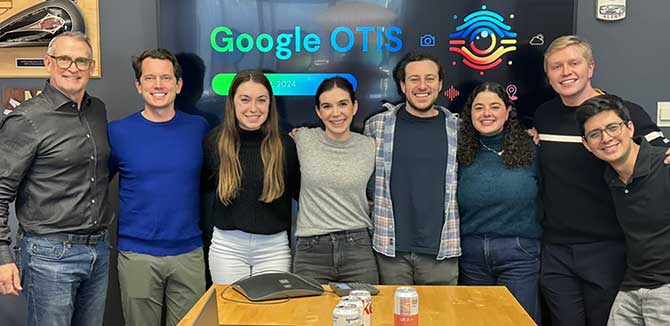Addressing Complex Business Needs in BIL
MMM students worked with Google to explore using generative AI and storytelling to help content consumers become content creators.

Guillermo Nevado (MMM '24) was drawn to Northwestern's MBA + MS in Design Innovation (MMM) program because of the chance to implement the lessons he learned in the classroom to innovative organizations.
He got a taste of that experience during his first year in MMM — a dual-degree program between Northwestern Engineering and the Kellogg School of Management — but he consistently heard the same message from second-year students: just wait until Business Innovation Lab (BIL).
BIL is the culmination of the MMM experience and pairs student teams with leading global organizations to solve real-world business problems.
"I was excited about applying the tools and frameworks learned in MMM classes to a real business context," Nevado said. "I was also thrilled to work with a corporate partner who was engaged, receptive to new ideas, and open to collaborating with our group in an active way."
Nevado worked with Google to explore using generative artificial intelligence (AI) and storytelling to help customers move from consuming content to creating it. He and his teammates were asked to explore how people interact with content platforms and types, what they consider creation, and what prevents them from being more active in that creation process.
The project prompt was intentionally broad and made it challenging for the students to determine the right project scope and focus. The fast-moving worlds of AI and content creation were also difficult to navigate.
"Every week, new announcements were made in the industry about products and developments that affected our hypotheses and needed to be considered for our recommendations," Nevado said. "We had to keep ourselves informed every week, bringing the most recent news to our discussions both to inspire our thinking, challenge our understanding of Google’s role and advantages in the space, and to inform the contrast of our solutions."
Nevado credited MMM with preparing him to navigate such an open-ended project. He and his teammates used diverge and converge cycles to explore broad ideas and then narrow down to the most promising solutions. This iterative process helped them refine their focus and deliver high-impact results.
The team members applied conceptual frameworks to structure their thinking about complex problems. They also ensured their solutions were both technologically feasible and resonated with human needs and behaviors.
The experience taught Nevado the importance of embracing uncertainty, communicating clearly and often, and adapting quickly. Today, he is applying those lessons to the procurement team at Apple, where he is navigating the dynamic landscape of global sourcing and supply management.
BIL gave Nevado exactly what he hoped for when he first applied to MMM — a chance to take class lessons out of the classroom and into innovative organizations to solve real business needs.
"Learning by doing has been the most effective way to truly understand human-centered design," he said. "Applying conceptual frameworks and tools learned in class to real-world problems allows us to crystallize our learning through action, failure, and repetition. It brings theory to life and helps us develop practical skills that are essential for addressing complex business challenges."
